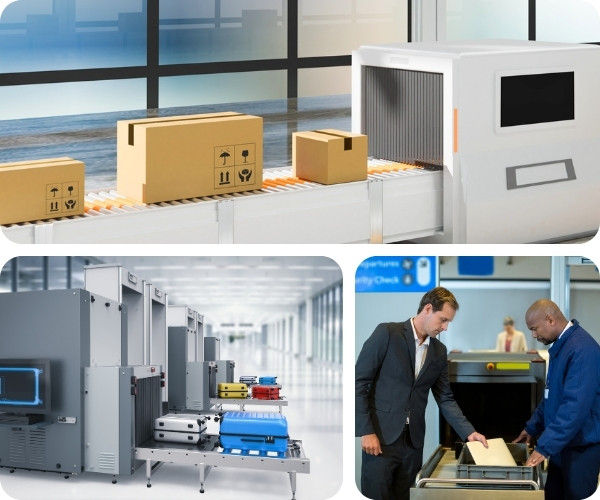X-Ray Baggage Scanners: Occupational Radiation Safety and Regulatory Framework
- milarepa Delasag
- 17 sept.
- 2 min de lecture

X-ray baggage inspection systems—commonly called “baggage tunnels”—are essential tools for non-intrusive screening of objects. They use low-energy X-ray generators to produce detailed images of the contents of luggage or packages. While these devices are designed with extensive shielding, their operation still requires careful radiological protection to safeguard workers and the public.
Typical Fields of Application
Aviation Security: Airports worldwide deploy baggage tunnels for carry-on and checked-baggage screening to detect weapons, explosives, and contraband.
Hospitality and Event Venues: Hotels, conference centers, and large sporting or cultural events use these scanners to protect guests and staff.
Industrial Quality Control: Manufacturing plants and logistics hubs employ tunnel systems for non-destructive testing, package integrity checks, and detection of hidden defects or contamination.
Freight and Transport: Customs facilities, maritime ports, and parcel distribution centers use X-ray tunnels to inspect cargo, parcels, and mail at high throughput.
Radiation Safety Principles
Although modern baggage tunnels are fully shielded and emit low-dose scattered radiation, radiological protection follows the three classic principles:
Time: Minimize the duration of any necessary proximity to the active unit.
Distance: Maintain appropriate separation from the X-ray source and beam path.
Shielding: Ensure integrity of lead-lined curtains, interlocks, and enclosure panels to prevent leakage.
Routine surveys with calibrated instruments confirm that exposure levels outside the cabinet remain well below occupational limits, typically close to natural background radiation.
Worker Protection Measures
Design Features: Fail-safe interlocks, warning lights, and key-controlled start-up prevent accidental exposure.
Operational Controls: Only trained and authorized personnel operate or maintain the scanner. Lock-out/tag-out procedures are mandatory during maintenance.
Monitoring: Periodic radiation leak tests and annual inspections verify compliance.
Training and Records: Operators receive instruction on radiological hazards, emergency procedures, and regulatory requirements; records of training and dose assessments are maintained.
Regulatory Framework
France
Regulated under the Code de la santé publique and the Code du travail (articles L.1333-1 et suivants), requiring risk assessment, zoning of controlled areas, and approval of the installation by the Autorité de sûreté nucléaire (ASN).
Periodic radiation checks and worker training are legally mandated.
European Union
Governed by Directive 2013/59/Euratom, establishing Basic Safety Standards (BSS) for justification, optimization (ALARA principle), and dose limits (20 mSv/year for occupational exposure).
Member States transpose these standards into national law.
International Guidelines
IAEA Safety Standards provide global best practices for cabinet X-ray systems.
ICRP (International Commission on Radiological Protection) offers dose-limit recommendations and optimization strategies.
IEC 61010-2-091 specifies safety requirements for cabinet X-ray systems used for security or industrial inspection.
Key Recommendations
Ensure installation and maintenance are performed by certified professionals.
Implement routine radiological surveys and leak testing at least annually.
Provide refresher radiation-safety training for all operators.
Maintain clear signage and access control around each scanner.
Establish emergency procedures and immediate reporting protocols for any suspected shielding defect or accidental exposure.



Commentaires